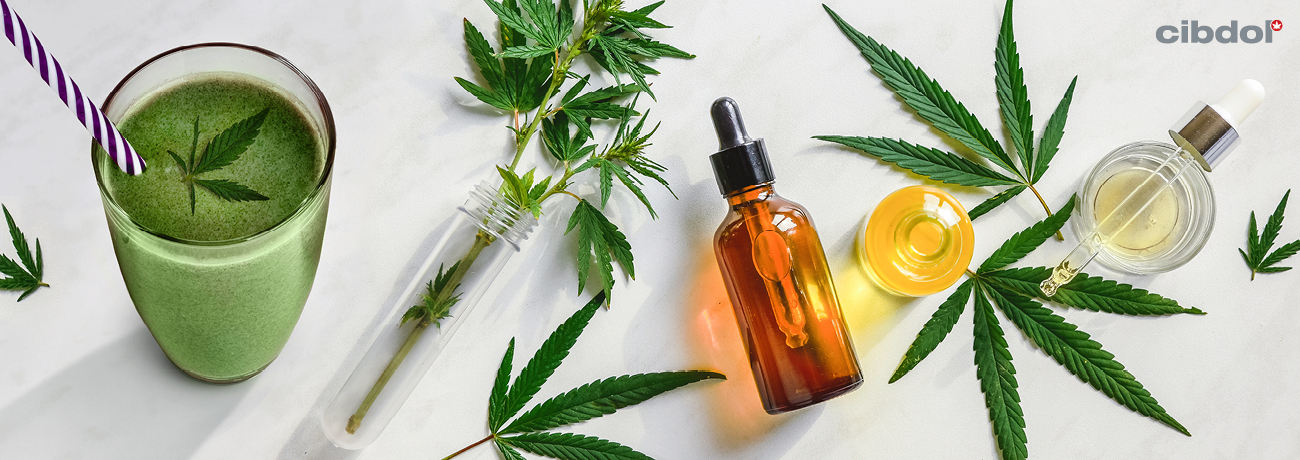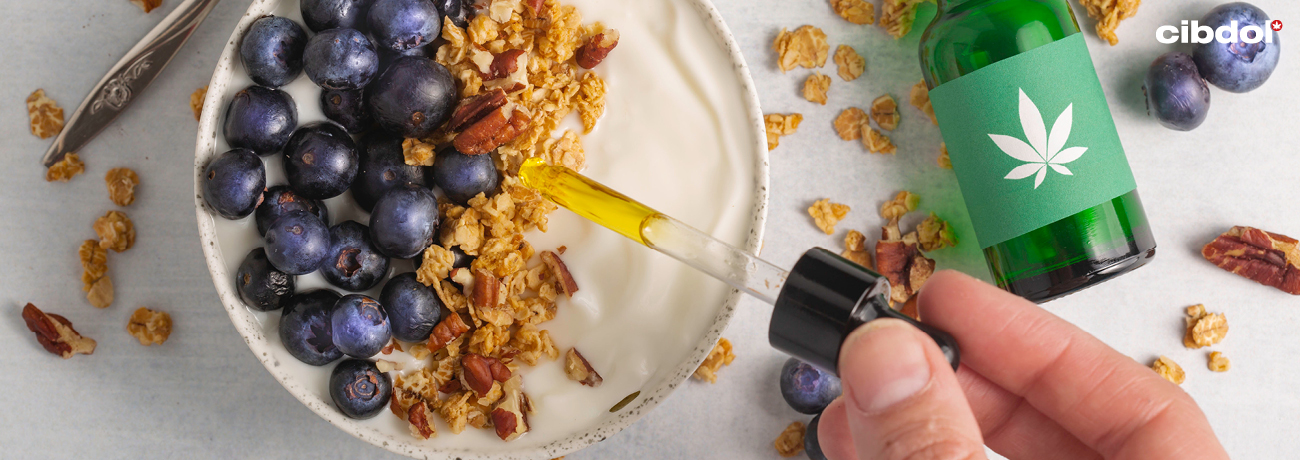How To Cook With CBD Oil

Interested in cooking with CBD oil, but not sure where to start? Our definitive guide explains exactly what you need to know about cooking with cannabidiol, and how to add it to your favourite recipes. Keep reading to find out more.
Contents:
Why add CBD oil to food and drink?
CBD is an extremely versatile cannabinoid used in dozens of ways. Despite this, some users struggle to find a method of administration that suits their lifestyle and preferences. Perhaps you find the taste of raw CBD oil unpleasant or prefer to have something else in your stomach when you dose? Others find it challenging to remember to take CBD oil throughout the day, especially those with busy schedules.
In any case, you can integrate CBD oil into your routine in a comfortable, convenient, and natural way—by adding it to food and drink. You can infuse CBD oil, CBD hemp seed oil, and CBD black cumin seed oil into a wide variety of dishes, with delicious and effective results.
Advantages of cooking with CBD oil
• CBD oil is excellent in salads, smoothies, and other fresh treats
• Convenient and straightforward
• Masks the natural taste of CBD oil
• Effects last longer
Disadvantages of cooking with CBD oil
• Can't heat CBD oil directly
• Delayed onset of effects
• Difficult to get a precise dose (recipe-dependent)
• Works best in recipes with healthy fats
How to use CBD oil in cooking
As we've alluded to, there are several ways to infuse CBD oil into everyday food and drink.
• Drinks
Adding CBD to smoothies is a great way to incorporate the cannabinoid into your daily routine. Smoothies tend to have a strong taste and texture, masking the CBD oil. Another advantage of this approach is that you won't lose any CBD—once it's in the blender, it has nowhere to go. As such, CBD smoothies are economical, and also helpful to users who need to dose precisely.
But, it isn't just smoothies that benefit from CBD oil—teas and coffees can too! Add a few drops directly to tea and coffee for a natural boost (just make sure to add the CBD oil once the tea/coffee is off the heat).
• Hot dishes
You don't want to fry with CBD oil at all. Not only will you lose most of your oil at the bottom of the pan, but you'll lose the valuable CBD to heat and evaporation. If you'd like to incorporate CBD oil into a hot dish, simply wait until it's done and sprinkle some on top.
Baking with CBD oil is another convenient and tasty option, but try not to go above 170°C/338°F or your CBD will start to degrade. Stay below that threshold, and you won't lose any of the product—all of your CBD will go directly into your food.
Baking also allows you to measure out your doses precisely. If you have a plate of sixteen equal-sized brownies, and you know precisely how much CBD oil went into the batch, you can calculate how much CBD each brownie contains.
• Cold dishes
If you're having a salad, why not toss some CBD oil into the mix? Putting CBD oil on salads is an excellent option as it bypasses the tricky exposure to heat. Just make sure to save a piece of bread or dry lettuce leaf to pick up any CBD remaining on the side of the plate. In fact, CBD oil makes an excellent dressing or garnish for innumerable cold dishes, not just salads!
Extra tips for cooking with CBD oil

If you can't see a suggestion you like the look of, feel free to experiment with CBD oil and your favourite foods. Just keep these top tips in mind when cooking.
• Use CBD oils from high-quality sources
Extracting CBD from raw plant material requires sophisticated machinery. Without it, there's no telling what compounds, chemicals, and additives will be left behind. If you're going to cook with CBD oil, make sure you choose a reputable producer, one that independently tests their products. By looking through third-party tests results, you can check the oil's exact contents before you add it to your signature dish.
• Avoid directly heating CBD oil
We've alluded to this already, but when cooking with CBD oil, avoid direct heat at all costs. Excessive temperatures will not only degrade CBD (spoiling its effects) but, depending on the carrier oil, you risk harmful free radicals forming.
Just because you have to avoid high temperatures doesn't mean you can't add CBD to your favourite hot foods. It may mean, however, that rather than adding it during the early stages of cooking, you wait until later in the recipe and stir CBD oil directly into a sauce or garnish.
• Incorporate healthy fats
CBD is hydrophobic, meaning it repels water. Instead, the cannabinoid binds easily with fats, and doing so improves its absorption rate. If you're going to cook with CBD oil, it works best in recipes that utilise healthy fats such as coconut, avocado, full-fat yoghurt, and oily fish. Or, if you fancy a treat, try using a small amount of cream in your coffee instead of milk.
• Start slow with CBD oil
When trying anything new with CBD oil, start with a small amount of a low-concentration formula. With your body having to process food and the active cannabinoids, effects may differ slightly. It's always best to start slow and see how you feel. Once you've mastered the culinary side of CBD oil experimentation, you can find what dose works for you.
What’s the right dose of CBD oil for cooking?
Unless you're experienced in cooking with CBD oil, it's best to stick to what you know. By that we mean using the same dose you usually would. If you're adding CBD oil to your lunchtime meal, and would typically take 3–4 drops sublingually, simply sprinkle the same amount on your food instead.
Don't forget that CBD consumed orally has to contend with the digestive system, which means a delayed onset. The benefit, however, is that when the effects do kick in, they'll last longer.
A common mistake novices make is adding more and more CBD oil to food because they aren't feeling the same effects immediately, when all they need to do is wait 40–60 minutes. Once you're accustomed to cooking with CBD oil, you can increase or decrease the dose accordingly.
Should you try cooking with CBD oil?
The most important rule for cooking with CBD oil is to experiment and find what works best for you. If you don't know where to start, you can check out some of the recipes we have on offer. Whichever culinary route you choose, take care and have fun!
The Cibdol store features a comprehensive selection of independently tested CBD oils perfect for including in a variety of dishes—whether you love sweet, savoury, or both! If you still want to learn more about CBD oil before trying it for yourself, you can refer to our CBD Encyclopedia for a beginner-friendly breakdown.












